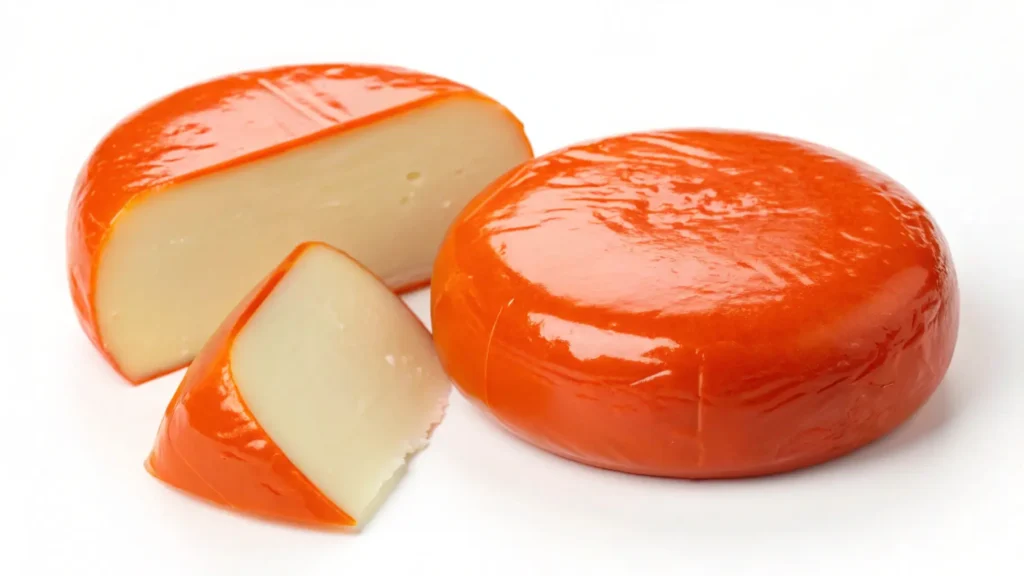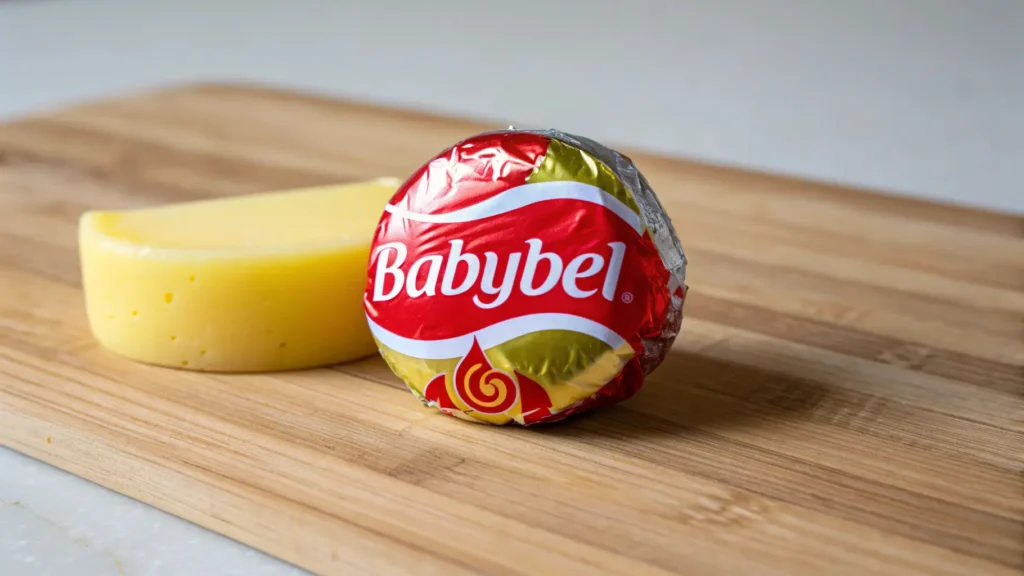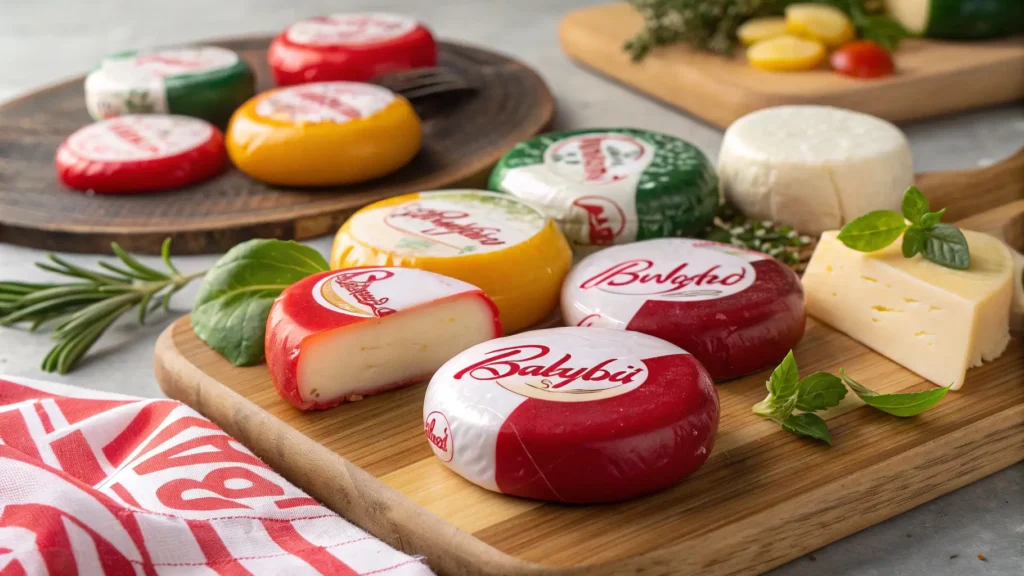Cheese enthusiasts and snack lovers alike are familiar with Babybel, the small, wax-coated cheese that’s become a favorite worldwide. But what exactly is Babybel cheese? Is it a specific type of cheese, or does its unique packaging and flavor make it something entirely different? In this article, we’ll explore the origins, type, and making of Babybel cheese, its nutritional profile, and why it stands out among cheeses. Whether you’re a curious foodie or simply a fan of these mini cheese wheels, this guide has something for everyone.

Introduction to Babybel Cheese
What is Babybel Cheese?
Babybel is a bite-sized cheese wheel coated in a distinctive red wax, designed for snacking on the go. This iconic cheese originated in France, where it was introduced as a portable and convenient dairy treat. While its size may be small, Babybel delivers a big flavor that’s loved by kids and adults alike.
Each Babybel cheese is crafted to be creamy, smooth, and subtly tangy, making it versatile for various palates. Its packaging not only adds a playful element but also serves to preserve the cheese’s freshness.
The Popularity and History of Babybel
The Babybel brand traces its roots back to the 1950s. It was created as a convenient, shelf-stable alternative to larger cheese blocks. Over time, its unique wax coating and fun packaging helped it gain international popularity. Today, Babybel is available in multiple varieties and flavors across more than 120 countries.
Why is Babybel Wrapped in Wax?
The signature red wax coating isn’t just for looks—it plays a critical role in preserving the cheese. This layer protects the cheese from external contaminants, locks in moisture, and extends its shelf life without the need for artificial preservatives. Plus, peeling off the wax adds a tactile experience that many fans find oddly satisfying.
The Type of Cheese Babybel Represents

Is Babybel Cheese Edam?
A common question many ask is, “What kind of cheese is Babybel?” The answer lies in its roots—Babybel is a semi-hard cheese based on Edam, a traditional Dutch cheese. Like Edam, Babybel is mild, slightly nutty, and creamy, making it appealing to a wide range of taste buds.
While it shares similarities with Edam, Babybel has its own unique flavor profile. The production process enhances its smooth texture and gives it a more buttery, melt-in-your-mouth experience. This makes Babybel perfect for quick snacking or adding a creamy touch to your meals.
Comparison of Babybel with Edam and Gouda
If you’re wondering how Babybel compares to other cheeses like Gouda, the difference lies in the aging process and texture. Gouda tends to have a richer, deeper flavor due to longer aging, while Babybel maintains a fresher, milder taste, thanks to its shorter maturation.
Unlike Gouda or Edam, Babybel is coated in its famous wax shell, a feature that sets it apart. This wax layer locks in freshness, which isn’t as common in traditional Edam. As a result, Babybel brings a modern twist to these classic cheese styles.
The Unique Attributes of Babybel Cheese
What makes Babybel truly one-of-a-kind is its perfect balance of portability, flavor, and freshness. Its smooth texture is complemented by its distinct wax shell, making it easy to enjoy without additional preparation. Whether you’re at a picnic, in the office, or on the go, Babybel is a snackable delight that combines traditional cheese-making with modern convenience.
How Babybel is Made
The Cheese-Making Process for Babybel
The production of Babybel cheese follows traditional cheese-making techniques with a modern touch. Pasteurized cow’s milk is the primary ingredient, which is fermented using mesophilic cultures. After curdling, the cheese is pressed and lightly aged to develop its creamy texture and mild flavor.
Babybel’s unique twist comes from its iconic wax coating, which is applied after the cheese is shaped and dried. This process ensures the cheese stays fresh and flavorful for weeks without the need for refrigeration, a key factor in its global appeal.
Key Ingredients in Babybel Cheese
The main ingredients in Babybel are straightforward—pasteurized cow’s milk, cultures, rennet, and salt. These components come together to create a cheese that’s as simple as it is delicious. The wax coating, while not edible, plays a significant role in protecting the cheese from moisture and contaminants.
Role of Wax Coating in Preservation
Babybel’s bright red wax coating isn’t just for aesthetics—it’s a clever solution for preserving the cheese naturally. This coating eliminates the need for artificial preservatives by creating a barrier against air and bacteria. It also locks in the cheese’s moisture, ensuring a consistently creamy bite every time you peel off the wax.
Is Babybel Considered a Processed Cheese?
No, Babybel isn’t a processed cheese. It’s crafted using traditional methods and natural ingredients. While its small size and wax coating might give the impression of heavy processing, Babybel’s production process is closer to that of artisanal cheeses than processed alternatives.
With its fascinating production process and natural ingredients, Babybel offers an authentic cheese experience in a modern, convenient package. Next, we’ll dive into its nutritional profile to understand its health benefits and dietary suitability.
Nutritional Profile of Babybel Cheese
Calories, Fats, and Proteins in Babybel
If you’re curious about the nutritional value of Babybel, you’ll be pleased to know it’s a balanced snack option. A standard Babybel cheese wheel contains approximately 70 calories, 5 grams of fat, and 5 grams of protein. This balance of macronutrients makes it ideal for those seeking a quick, nutritious energy boost.
Packed with calcium and protein, Babybel supports strong bones and muscles. It’s also relatively low in carbs, making it a good choice for low-carb diets. The next time you grab a Babybel, you can feel confident it’s both delicious and nourishing.
Health Benefits of Babybel Cheese
Babybel is more than just a tasty treat; it’s a compact source of essential nutrients. Its protein content aids muscle repair and growth, while its calcium supports healthy teeth and bones. Additionally, Babybel is free from artificial preservatives, making it a wholesome option for families.
Because Babybel is portion-controlled, it’s easier to manage your intake compared to larger cheese servings. This makes it particularly useful for anyone aiming to snack mindfully.
Is Babybel Suitable for Diets like Keto or Low-Carb?
For keto enthusiasts or those following a low-carb lifestyle, Babybel fits the bill perfectly. With minimal carbs and high fat content, it aligns with the macronutrient goals of a ketogenic diet. Pair it with nuts or veggies for a satisfying snack that keeps you in ketosis.
Varieties and Flavors of Babybel Cheese

Classic Babybel Cheese Varieties
Babybel offers more than its classic red-wax wheel. The lineup includes options like Light Babybel (lower in calories and fat), Gouda, Cheddar, and Mozzarella varieties. Each is wrapped in a distinctively colored wax, so you can easily choose your favorite.
These varieties cater to different taste preferences while maintaining the creamy texture and fresh flavor Babybel is known for.
Regional or Special Varieties of Babybel
In certain regions, you may find limited-edition or specialty Babybel cheeses. Some markets offer goat cheese Babybel, which has a tangy flavor that’s perfect for adventurous palates. Regional flavors often draw inspiration from local tastes, ensuring there’s a Babybel for everyone.
How Does Babybel Compare to Other Cheeses?
When stacked against other cheeses, Babybel’s standout feature is its portability. Unlike blocks of cheese that require slicing, Babybel’s small, pre-wrapped portions are ready to eat. Its wax coating also helps it stay fresher longer compared to unwrapped options.
For cheese lovers seeking a quick snack or an easy addition to lunchboxes, Babybel is a convenient, flavorful choice.
Explore More!
For more cheesy inspiration and recipes, you might enjoy this guide on “What is the Stringy Cheese Called?”. It’s packed with fun tips for cheese lovers!
Common Myths and Misconceptions about Babybel Cheese
Myth: Babybel is a Processed Cheese
One of the most common misconceptions about Babybel is that it’s a processed cheese. This likely stems from its uniform texture and small, convenient size. However, Babybel is far from processed. It’s made using traditional cheese-making methods, starting with high-quality pasteurized milk, rennet, and cultures.
The wax coating, which protects the cheese, might also contribute to this myth. But this layer is purely functional and doesn’t mean the cheese itself is altered or artificial. So, “What kind of cheese is Babybel?” It’s a naturally made, semi-hard cheese that stays true to its dairy roots.
Misconception: Wax Coating Makes Babybel Taste Like Plastic
Some people believe the wax coating affects Babybel’s taste, giving it a plastic-like flavor. This couldn’t be further from the truth. The wax acts as a barrier to keep the cheese fresh and doesn’t influence the flavor in any way.
If you’ve experienced an unusual taste, it’s more likely due to storage conditions or external factors, not the wax. Properly stored Babybel maintains its creamy, mild flavor, proving that the wax coating is a protector, not a flavor changer.
FAQs about Babybel Cheese
What is the Wax Coating Made Of?
The wax coating on Babybel is made from a blend of paraffin and food-safe colorants. This material is entirely non-toxic and designed to preserve the cheese, not to be eaten. Its primary role is to protect Babybel from drying out and to extend its shelf life.
Can You Eat the Wax Coating on Babybel?
Although the wax coating is food-safe, it’s not meant to be eaten. Its purpose is solely to keep the cheese fresh and free from contamination. If you’ve ever wondered why it peels off so easily, it’s because it’s designed to be removed without effort.
Is Babybel Cheese Suitable for Lactose-Intolerant Individuals?
Yes! Babybel cheese is naturally low in lactose, making it a potential option for those with lactose sensitivity. However, if you’re highly sensitive, it’s always a good idea to consult with your doctor or try a small amount first.

